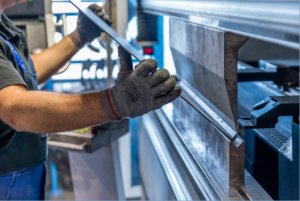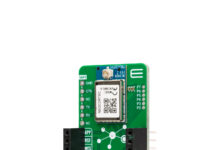
In today’s competitive business environment, controlling costs has become more critical than ever. The fast-paced economy means that meeting customer needs before a competitor is the goal for many companies. Speeding up manufacturing, reducing the costs of overhead and production, and creating new efficient means of production have become a major focus for factory businesses.
The Internet of Things (IoT) is now a primary means for working on solutions. The IoT connects devices of all kinds – computers, mechanical, digital – into a network of information-sharing. Working with a creative digital agency to develop a platform that holds all of the gathered information can reduce the need for people to do the grunt work of gathering data in order to improve processes. It could also be designed to include the means to predict and address process failures before they happen.
Through extensive data collection, the IoT helps manufacturers discern new insights into the production processes for everything from floor plan design, supply chain efficiency, and staffing needs. In the next five years, virtually all factories will employ some form of the IoT to enhance efficiency, improve productivity, and gain market share.
IoT Will Change the Roles of Employees in the Workplace
Automation of the manufacturing process will increase productivity while reducing human interaction with the process, as companies are seeking to do more with fewer people on production lines. For employees, the change will be less likely to mean a reduction in jobs as it will a shift in types of jobs needed.
The expanding field of data science will revolutionize the understanding of how manufacturing can work. Machines will soon be capable of performing routine human tasks faster and more efficiently. This means that a new breed of employees is needed to analyze all this data, produce algorithm programs for study, and utilize their insights to contribute to company success.
Major Businesses Are Already Employing IoT
The use of IoT in the workplace has been growing for years. Its successes are leading the way to its expected widespread use. In fact, today’s firms are already seeing renewed productivity in a variety of ways.
General Electric Invests Big in IoT
GE not only employes IoT in its own processes, but also has positioned itself as a provider of IoT platforms across multiple industries. In avionics, for example, GE platforms can analyze over 30 million data points for each air flight.
On the face of it, that volume of data, multiplied across dozens of planes, would be virtually impossible to evaluate with human workers alone. The insights gleaned from this level of IoT connectivity has demonstrated, for instance, that the ability to reduce fuel consumption by 2% generates $20 million in cost-savings per flight.
Siemens
Industrial manufacturing giant Siemens uses the IoT to connect and manage its manufacturing plants. In one location, 75% of the manufacturing process is handled without the need for human staff intervention. The process increases quality control by delivering the correct parts to the correct production points, optimizes the efficiency of the process, and handles inventory management in real time.
The majority of human staff are devoted to overseeing the IoT systems, only intervening when truly unpredictable events occur.
IoT Now and in the Future
By 2015, the worldwide IoT marketplace was already valued at $157 billion, with projected growth in the business-to-business (B2B) market of $85 billion in 2020. The largest growth is predicted to occur in the industrial and manufacturing industries, with an astonishing 85% increase in IoT adoption rates on the factory floor.
The new direction for industry promises enormous productivity gains, new areas of employment, and cost-effective solutions to manufacturing. To maintain a competitive edge in the near future, manufacturers should be looking to deploy the IoT today



















